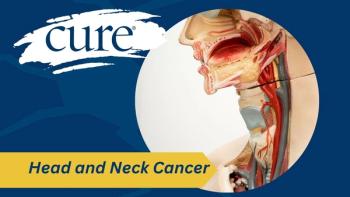
Recruiting for Clinical Trials Takes Center Stage
Improving the adult clinical trial enrollment rate up from 3 percent gains importance among patients and professionals.
By participating in clinical research, Jody Schoger and her husband, Steve, both cancer survivors, hoped to help themselves and other patients. But the couple quickly learned it wasn’t as easy as just signing up.
“I was more than happy to check out clinical trials, but when I did, I either found that the trials were only for early-stage breast cancers, newly diagnosed breast cancers, or for metastatic breast cancer. I was excluded from every single one I found, based on my cancer stage,” says Jody, who was diagnosed with stage 3 breast cancer in 1998. “I also checked out a study for past smokers that involved vitamin D. In prescreening, it was determined that I had not smoked enough! I also recall checking out one on preventative ovarian cancer screening, but since I’d had cancer, I didn’t qualify.”
Steve, who had a recurrence of melanoma in 2005, was able to find and enlist in a treatment trial, but only with a lot of work on his part.
“His own doctor was running the trial, but he didn’t mention it until (Steve) asked,” says Jody. After the paperwork, tests, and procedures to get into the trial, Steve was finally enrolled and received his first treatment six months after his recurrence.
Two years later, after insurance battles and mounds of paperwork, Steve is free of cancer—and the Schogers say they wouldn’t change a thing. The Texas couple learned what many in the cancer field have known for years—enrolling for cancer clinical trials is a quagmire, which may explain why only about 3 to 5 percent of adult patients participate in cancer studies. However, researchers, industry, and nonprofit organizations are actively working to uncover why enrollment has lagged over the past few decades and have started implementing changes to improve it.
Since Jody’s breast cancer diagnosis more than a decade ago, finding a clinical trial has improved with the emergence of online clinical trial databases targeted to patients. And although there is no one comprehensive database—which remains a problem—there are several online databases patients can use to locate clinical trials.
In addition to
Patients have their reasons, too, for not entering clinical trials, including fear of being a guinea pig, receiving a placebo, and unknown side effects, while others worry about the cost of frequent travel or insurance issues.
David Spigel, MD, program director of lung cancer research at the Sarah Cannon Research Institute in Nashville, says that identifying these patient issues is important in understanding the enrollment problem.
“When you have patients interested in joining a clinical trial and they’re not receiving the information from their doctor or the burden is too great due to cost or travel to a center conducting a trial, those issues need to be solved,” he says.
Learning about trials at the onset of diagnosis should initially come from the patient’s doctor, but often it falls upon the patient to ask about clinical trials, as the Schogers found out. To discuss the barriers of enrollment on the professional side, including patient-physician communication, the American Society of Clinical Oncology held a session at their annual meeting on how the medical community, industry, and government agencies can work toward boosting clinical trial enrollment.
Spigel, who chaired the ASCO session on clinical trial enrollment, says he was pleasantly surprised at the turnout and interest. “We’ve had a lot of feedback from investigators, but then, I’ve also had a lot of feedback from patients. I think this is a topic that has been out there for a number of years and the more we can talk about it, the greater chance we’ll have in trying to solve the problem.”
Another issue Spigel noted, which may be harder to overcome, is the strict eligibility required to get into many trials. Comorbid health problems, age, and medications patients may be taking are factors that can all prevent a patient enrolling in a specific trial, especially the population that is most susceptible to cancer—people over age 65. So it may throw into question whether the trial results can be applied to a “real world” patient population that may have other medical problems. In addition, as rare safety issues emerge in post-marketing studies for specific drugs, researchers are finding that it may impact an entire class of drugs.
Identifying the problems are the first step, implementing solutions may take much longer.
“You’re really looking at changes that may take several years to take into effect, maybe even a decade before you see real change,” Spigel says. “The bottom line is that we have a lot to do. We shouldn’t be satisfied with where enrollment is right now; we want to improve it.”





